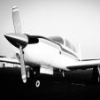Avoid shock cooling on decent
-
Members Online
- MikeOH
- ericrynehess
- KLRDMD
- LANCECASPER
- bhtitle
- Red Leader
- Andy95W
- affricate
- eman1200
- Glen S.
- Marc B
- ArtVandelay
- toto
- Dwb62
- dkkim73
- Hank
- larryb
- bigmo
- Crawfish
- ElkoRandy20J
- N201MKTurbo
- johnbkeck
- AndreiC
- Schllc
- 201Steve
- Mcstealth
- georger
- 201er
- McMooney
- JB2000
- EricJ
- richardbrochu27
- Mikey30V
- 1980Mooney
- bluehighwayflyer
- takair


Recommended Posts
Join the conversation
You can post now and register later. If you have an account, sign in now to post with your account.